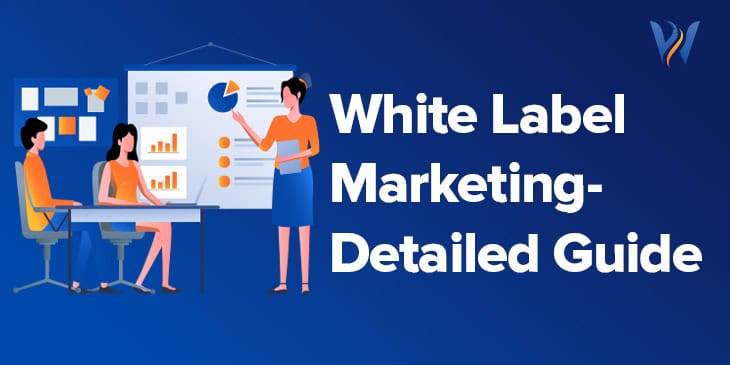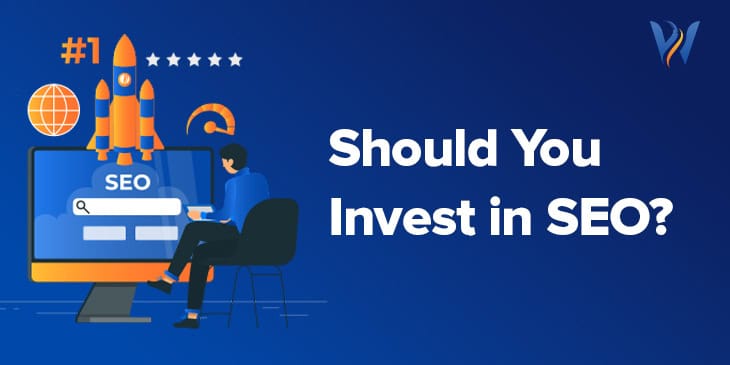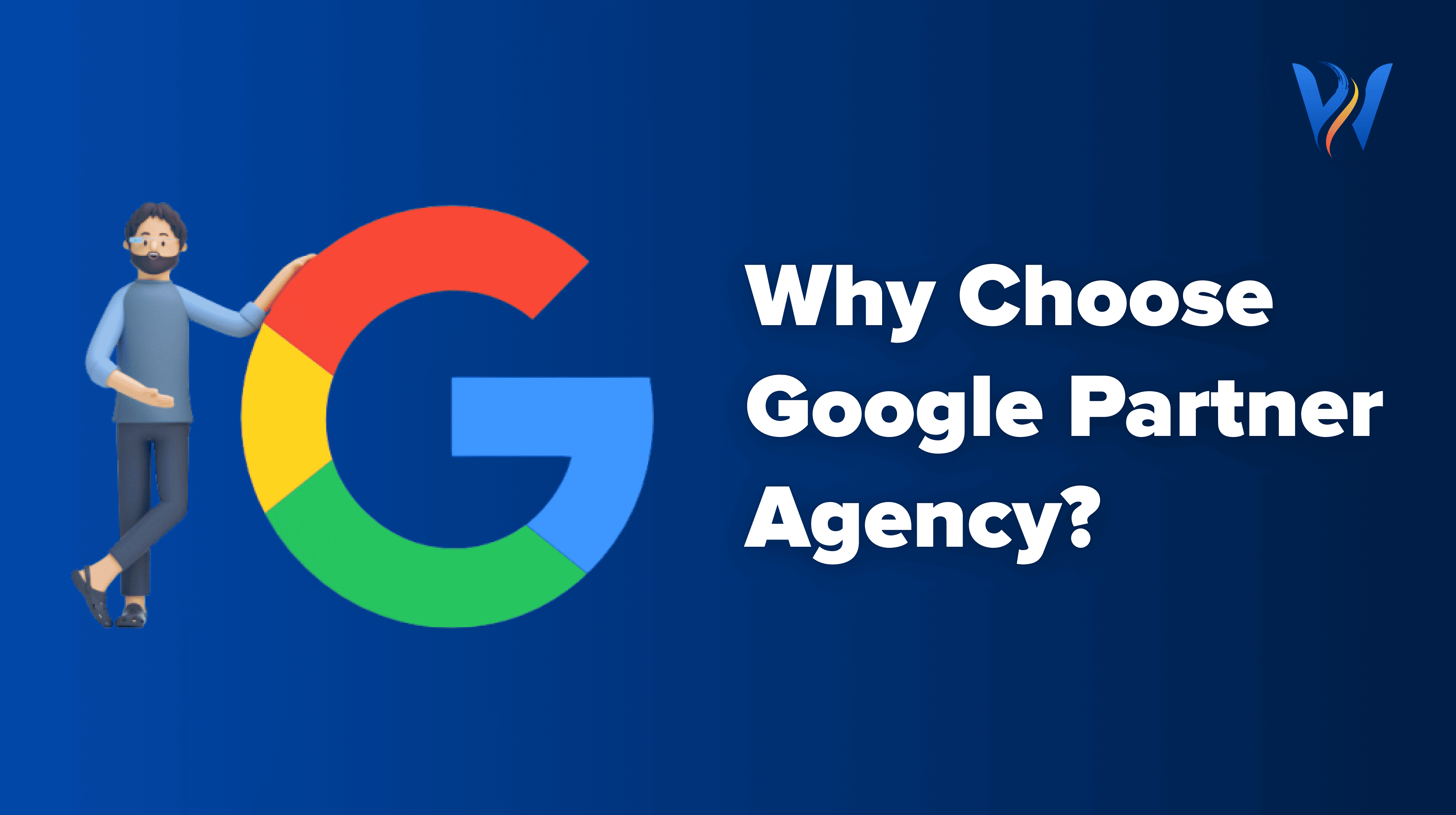If you’ve ever looked up a product online and then saw an ad for it later, you’ve already met the world of online advertising. Businesses use it every day to get their name, products, and services in front of the right people. Interestingly, recent data shows that Google’s new AI Overviews cut click-through rates by about 34.5% on top search results.
Not all ads work the same way—or cost the same. Two of the biggest types of digital ads are display ads and search ads. Each one has its own style, purpose, and way of helping you earn back your ad spend.
Before we compare which delivers better ROI, let’s look closely at how each type works and what makes them useful.
What Are Display Ads?
Display ads are the colorful banners, pictures, or videos you see while browsing websites, scrolling through apps, or watching online videos. They’re part of display advertising, which helps brands stay visible even when people aren’t actively searching for something to buy.
“Display ads work best when you want people to recognize your brand.”
Here’s how it works:
- A business creates an image or video ad.
- The ad is shown across many websites that allow ads on display.
- When people see the ad, it builds awareness. Even if they don’t click, they start recognizing the brand.
What Display Ads Look Like
You’ve probably seen these on news sites or social media platforms. They can appear as:
- Rectangle or square image boxes
- Video ads before YouTube clips
- Animated banners on the side of a webpage
Why Businesses Use Display Ads
Display ads help businesses get noticed by large audiences. They are great for:
- Brand awareness: People learn who you are, even if they don’t click.
- Remarketing: Showing ads to people who visited your site but didn’t buy.
- Low cost per click (CPC): You can reach thousands of people without spending much.
Because they reach people who might not be searching yet, display ads are often used early in the marketing funnel. They “warm up” new audiences, so when those people search later, they remember your brand.
Display ad advertising works well for clothing brands, travel agencies, and new products that benefit from strong visuals. Think of it like putting up an online billboard that follows your audience around the web.
There are also display advertising ads that use smart tools to target the right audience. For example, if someone reads about hiking, they may later see ads for hiking boots. With AI in digital marketing, these targeting methods keep improving—helping companies show the right ad to the right person at the right time.
What Are Search Ads?
Search ads are the short, text-based ads you see at the top of search engine results when you look for something specific. For example, if you type “best running shoes” into Google or Bing, the first few links that appear with a small “Ad” label are search ads.
“Search ads focus on showing text-based ads at the exact moment someone is looking for a product or service.”
How Search Ads Work
- Advertisers choose keywords related to what people might search for.
- When someone types that keyword, the ad appears near the top of the results.
- The advertiser pays only when someone clicks the ad (this is called pay-per-click, or PPC).
Why Search Ads Are Powerful
Search ads connect with people who already have intent. They’re looking for information, a product, or a solution right now. That means:
- Higher click-through rates (CTR) — people are ready to act.
- Better conversion rates — clicks often turn into purchases or sign-ups.
- Stronger short-term ROI — because ads appear at the exact moment of need.
Search ads work especially well for businesses that offer services or products that customers search for directly—like car repairs, dentists, or software tools.
What Makes Them Effective
- Keyword targeting: Ads match real searches.
- Ad extensions: Extra links or phone numbers make the ad more useful.
- Measurable performance: Every click and conversion can be tracked.
In short, search ads meet the customer at the right moment. While display ads build interest, search ads help you capture it.
Why Comparing Them Matters
Now that you understand how each type works, it’s easy to see why comparing them is important. Both can bring strong results, but they serve different goals.
Here’s the main difference:
- Display ads focus on awareness. They help people learn about your brand early.
- Search ads focus on action. They reach people who are already looking to buy or learn more.
When to Use Each
- Use display advertising when launching a new product, introducing your brand, or retargeting visitors.
- Use search ads when you want quick results or direct sales.
How They Work Together
Many smart marketers combine both. They use display ad advertising to attract attention and search ads to close the deal. Someone might see your ad for a coffee maker while reading a recipe site. A week later, they search “buy coffee maker online” and click your search ad.
The real goal is balance. Both types of ads can boost ROI when they support each other. With good data and smart tools—like AI in digital marketing—you can target, track, and optimize campaigns for better results across both ad types.
Comparing them helps you choose where to start and how to spend wisely. When you know what each ad type does best, you can align your strategy with your business goals.
Which Type of Ad Brings Better ROI for Your Goals
| Topic | Search Ads | Display Ads |
| Primary goal | Get quick actions like buys, calls, sign-ups | Build awareness and stay visible |
| How it works | Shows text ads when people search for a need | Shows image/video ads while people browse |
| Best for | High-intent users ready to act | Reaching many people and remarketing |
| Time to impact | Fast (days to weeks) | Slower (weeks to months) |
| Typical result pattern | Fewer views, higher chance to convert | Many views, lower chance to click |
| ROI focus | Short-term returns (direct sales/leads) | Long-term returns (brand lift + assisted sales) |
| Budget fit | Great when you need results now | Great when you need steady reach |
| Targeting strength | Matches user searches and keywords | Uses interests, behavior, and past visits |
| Creative needs | Strong headlines and clear offers | Strong visuals and simple messages |
| Works best when | You know the search terms people use | You want people to remember your brand |
| Key metrics to watch | Cost per click, conversion rate, cost per lead/sale | Reach, frequency, view-throughs, assisted conversions |
| Common optimizations | Add negative keywords, test ad copy, improve landing pages | Use remarketing lists, set frequency caps, test images/video |
| Biggest strength | Captures demand at the right moment | Creates demand and keeps your brand top-of-mind |
| Main watch-out | Can get pricey on popular keywords | Click-through rates are low; judge by lift, not clicks |
| Great use cases | “Book dentist near me,” “buy running shoes online” | New product launch, seasonal promos, cart reminders |
| Example goals | 100 leads this month at target cost | Reach 200k people and grow branded searches |
| Team tip | Start with core keywords and expand | Start with remarketing, then add interest targeting |
| Best combo play | Use search ads to close the sale | Use display to warm the audience first |
When it comes to spending money on online ads, everyone wants the same thing—a good return on investment, or ROI. In simple terms, ROI means you earn more money from your ads than what you spend. But how you reach that goal depends on your business, your audience, and the kind of ad you use.
Both display ads and search ads can work really well. Each has its strengths and weak spots. To choose the right one for your goals, it helps to understand how they perform, what kind of results they bring, and how you can measure success.
Below is a deeper look at what makes each ad type valuable, how they compare, and what you can do to get the best results from your marketing budget.
ROI in Simple Terms
ROI is a way to measure the success of your ad spending. If you spend $100 and make $300 in sales, that’s a great ROI. But it’s not always that simple. Sometimes the value of an ad isn’t seen right away. Some ads make people aware of your brand first. Others drive action immediately.
Search ads often deliver fast results because they reach people already searching for a product or service. Display advertising, on the other hand, can take longer to show its full value because it focuses on awareness and brand recognition. Both matter for healthy, long-term growth.
When Search Ads Deliver the Best ROI
Search ads appear when someone types specific words or questions into a search engine. This means they reach people who already have a goal or problem they want to solve.
Here’s why search ads can bring strong ROI:
- High intent: When someone searches “best dentist near me,” they’re likely ready to book an appointment. Search ads capture that moment.
- Pay-per-click control: You pay only when someone clicks your ad. That helps you manage your budget carefully.
- Clear tracking: You can measure which keywords, clicks, and actions turn into sales.
For example, if you sell online courses, a person searching “learn Photoshop online” already knows what they want. A well-written search ad could get them to your site immediately, and they might sign up that same day.
Because search ads reach active shoppers, they tend to have higher conversion rates and quicker payoffs. That’s great if your goal is direct sales, leads, or sign-ups.
When Display Advertising Shines
Now let’s talk about display advertising—the colorful banners, videos, or images you see while reading blogs, watching videos, or browsing your favorite sites.
These ads on display may not get instant clicks like search ads, but they’re powerful for a different reason. They help people remember your brand and think about it later when they’re ready to buy.
Here’s how display advertising helps boost ROI in the long run:
- Builds brand awareness: People see your name, logo, or product often. Over time, they start to recognize you.
- Supports remarketing: You can target people who visited your site before but didn’t make a purchase.
- Keeps your brand visible: Even if users don’t click right away, you stay in their mind for future decisions.
Let’s say someone visits your clothing store online but doesn’t buy anything. Later, while reading a news article, they see one of your display advertising ads showing that same shirt. That reminder can lead them back to your site to complete the purchase.
This kind of display ad advertising works best for businesses that want to stay visible and build a steady audience over time. It’s like keeping your brand top-of-mind so customers think of you first when they’re ready to act.
Comparing Short-Term vs. Long-Term ROI
The difference between these two ad types often comes down to timing.
- Search ads = short-term ROI. They deliver fast results because they meet direct intent.
- Display advertising = long-term ROI. It builds relationships and recognition over time.
Here’s a quick breakdown:
| Goal | Best Ad Type | Why It Works |
| Immediate sales | Search ads | Reaches buyers ready to act |
| Brand awareness | Display ads | Reaches large audiences at a low cost |
| Customer loyalty | Display ads + Search ads | Builds awareness first, captures conversions later |
| Retargeting past visitors | Display ads | Reminds users to come back |
| Testing new products | Display ads | Gathers quick visibility data |
Both ad types can deliver strong ROI when used the right way. Many companies actually combine them for balance—display for awareness, search for action.
How to Choose Based on Your Goals
Your goals decide which type of ad makes the most sense.
Use search ads when:
- You want people to take action right away (buy, call, or sign up).
- You have limited time or budget and need quick results.
- You know which keywords your audience uses to find your product.
Use display advertising when:
- You’re launching a new product or business.
- You want to reach a wide audience across different websites.
- You need to remind past visitors about your brand.
Use both together when:
- You want to build awareness and drive conversions.
- You need consistent traffic and long-term brand visibility.
- You want to guide customers from interest to purchase.
Many marketers say combining both gives the best ROI because they support each other. Display ads warm people up, and search ads close the deal.
Blending Display and Search Ads for Better Results
If you want your campaigns to perform their best, think about how these two types of ads can work together instead of competing.
Here’s how to combine them effectively:
- Start with display: Run display advertising ads to introduce your brand.
- Follow up with search ads: Capture people who are now searching for your products.
- Add remarketing: Show ads on display to people who clicked but didn’t convert.
- Use data from search ads: Learn which keywords drive conversions and apply that insight to your display targeting.
For example, a travel agency might use display ads showing beautiful beach vacations to attract attention. Later, when users search “book beach vacation,” their search ad appears at the perfect time to drive bookings.
When used together, these ads can multiply ROI by keeping customers engaged through every step of their buying journey.
The Role of Platforms Like Google Ads and Meta Ads
Choosing where to place your ads also affects ROI. Two of the most popular platforms are Google ads and Meta ads (Facebook and Instagram).
- Google Ads: Great for search and display ads. You can reach people at every stage—from awareness to purchase.
- Meta Ads: Perfect for visual storytelling and interest-based targeting. These work especially well for display ad advertising on social media.
Each platform has tools that help you set budgets, pick audiences, and track results. Using both can give you broad coverage and better performance data to refine your campaigns.
Tips to Improve ROI Across Both Ad Types
To make the most of your budget, follow these steps:
- Set clear goals: Know what you want before spending money—sales, leads, or awareness.
- Target smartly: Use audience data to reach people most likely to care about your offer.
- Test and adjust: Try different images, headlines, and messages to see what works best.
- Track results: Use analytics tools to see which ads perform well and why.
- Stay consistent: ROI builds over time. Keep running ads regularly instead of starting and stopping.
Final Thoughts on ROI and Strategy
When you compare ROI, remember that both types of ads play different roles. Search ads give you quick wins and measurable returns. Display advertising builds a foundation that supports long-term success.
The smartest strategy often includes both—display advertising ads to create awareness and search ads to drive action. Each helps the other perform better, and together they can grow your business faster.
If you track your results, test your messages, and keep learning, you’ll see how both kinds of ads can deliver strong ROI when used with a clear plan and steady focus.
In short:
- Search ads = fast, focused, and direct.
- Display ads = broad, visual, and lasting.
- Together = balanced, powerful, and profitable.
Once you understand what each ad type does best, choosing the right mix becomes easy. Start small, test often, and grow your results step by step.
Conclusion
When it comes to display ads vs search ads, there’s no single winner. The best choice depends on your goals, your audience, and your budget. Display ads help people discover your brand, while search ads help you reach ready buyers. Using both together often delivers the best ROI.
If you want help creating smart ad strategies that actually deliver results, reach out to Web India Inc. today — let’s build campaigns that help your business grow!







